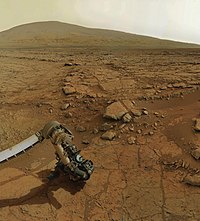Article I. The basis of the write is to introduce a theory that discusses the condition of the planet Mars present day Sunday, April 12, 2020. To engage in thought the basic atmosphere to the environment known on our planet is simple and brings to attention (appreciation) evaporation versus arid as Wikipedia (https://www.wikipedia.org/ ) has reported: "The atmosphere of Mars is the layer of gas surrounding Mars. It is primarily composed of carbon dioxide (95.32%), molecular nitrogen (2.6%) and argon (1.9%). It also contains trace levels of water vapor, oxygen, carbon monoxide, hydrogen and other noble gases. The atmosphere of Mars is much thinner than Earth's" this quote may be read on at https://en.wikipedia.org/wiki/Atmosphere_of_Mars.
Article II. Conjecture at Title:
Article III. Trunk to boot and brim:
Article IV. Environmental breakdown
Article V. Rain in activity
Article VI. Gravitational pull at the root presenting:
Article VII. Removal of all plant like due to no-under pole that holds gravity to ground due to heated environment crushing natural atmosphere causing the lift to exceed natural boundaries built by “earth caused gravitational” cycle.
Article VIII. As water rose to fall so does the dirt and fertile lands
Article IX. Weight, gravity, time, dome
Article X. b. https://en.wikipedia.org/wiki/Rain
Article XI. “The major cause of rain production is moisture moving along three-dimensional zones of temperature and moisture contrasts known as weather fronts. If enough moisture and upward motion is present, precipitation falls from convective clouds (those with strong upward vertical motion) such as cumulonimbus (thunder clouds) which can organize into narrow rainbands.”
Article XII. Gravity of the evolving planets
Article XIII. To attract
Article XIV. In gravity
Article XV. Of weight
Article XVI. Versus (flight or pole as equator touches balance at mass)
Article XVII. The immediate lift as in rain to cloud would pull all oceans to evaporate (molecular sift in (re)habitat touching reconstruction to dust and ash: MOVE RIVER and wind at/with Orion sequence at the cosmic belt for telescopic industry and trace flight path with general idea to project: the general composite to the next collection of molecule, ground and lift (salt considered strongly)
↻
Life on Mars
Jump to navigation Jump to search |
| This article is one of a series on: |
| Life in the Universe |
|---|
| Astrobiology |
| Habitability in the Solar System |
| Life outside the Solar System |
Scientific searches for evidence of life began in the 19th century, and continue today via telescopic investigations and deployed probes. While early work focused on phenomenology and bordered on fantasy, the modern scientific inquiry has emphasized the search for water, chemical biosignatures in the soil and rocks at the planet's surface, and biomarker gases in the atmosphere.[2]
Mars is of particular interest for the study of the origins of life because of its similarity to the early Earth. This is especially so since Mars has a cold climate and lacks plate tectonics or continental drift, so has remained almost unchanged since the end of the Hesperian period. At least two thirds of Mars' surface is more than 3.5 billion years old, and Mars may thus hold the best record of the prebiotic conditions leading to life, even if life does not or has never existed there,[3][4] which might have started developing as early as 4.48 billion years ago.[5]
Following the confirmation of the past existence of surface liquid water, the Curiosity and Opportunity rovers started searching for evidence of past life, including a past biosphere based on autotrophic, chemotrophic, or chemolithoautotrophic microorganisms, as well as ancient water, including fluvio-lacustrine environments (plains related to ancient rivers or lakes) that may have been habitable.[6][7][8][9] The search for evidence of habitability, taphonomy (related to fossils), and organic compounds on Mars is now a primary NASA and ESA objective.
The findings of organic compounds inside sedimentary rocks and of boron on Mars are of interest as they are precursors for prebiotic chemistry. Such findings, along with previous discoveries that liquid water was clearly present on ancient Mars, further supports the possible early habitability of Gale Crater on Mars.[10][11] Currently, the surface of Mars is bathed with ionizing radiation, and Martian soil is rich in perchlorates toxic to microorganisms.[12][13] The













No comments:
Post a Comment